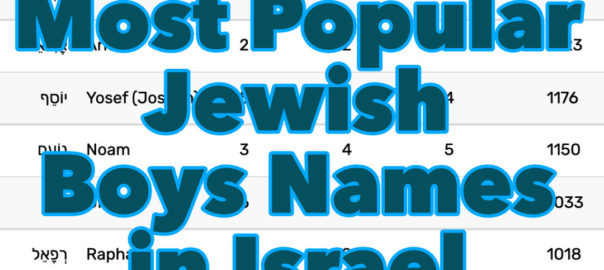The Israel Central Bureau of Statistics released the baby name data for 2020 last month. As I’ve done for 2014, 2015, 2016, 2017-2018, and 2019, I’m posting the top 101 Jewish boys names. These are the most popular names given to Jewish boys born in Israel during 2020. Below you can see the number of boys that were named each name, and the ranking for 2020, as well as 2019 and 2018 for comparison. For numbers and rankings from earlier years, see the annual posts linked to above. For the parallel girl’s list, see 101 Most Popular Jewish Girls Names in Israel in 2020.
Three boys names entered the top 101 names in 2020 – Gefen (126 to 93), Yehoshua (107 to 95), and Emanuel (103 to 101). The boys names that exited the list were Matan (93 to 105), Yaheli (87 to 108), and Asaf (86 to 125).
All the columns in the table below can be used to sort the table, so you can sort the table to see the order of ranking for each year, or by the spelling of the name in Hebrew or English. You can also search the table using the search field on the top right of the table.
Continue reading 101 Most Popular Jewish Boys Names in Israel in 2020







